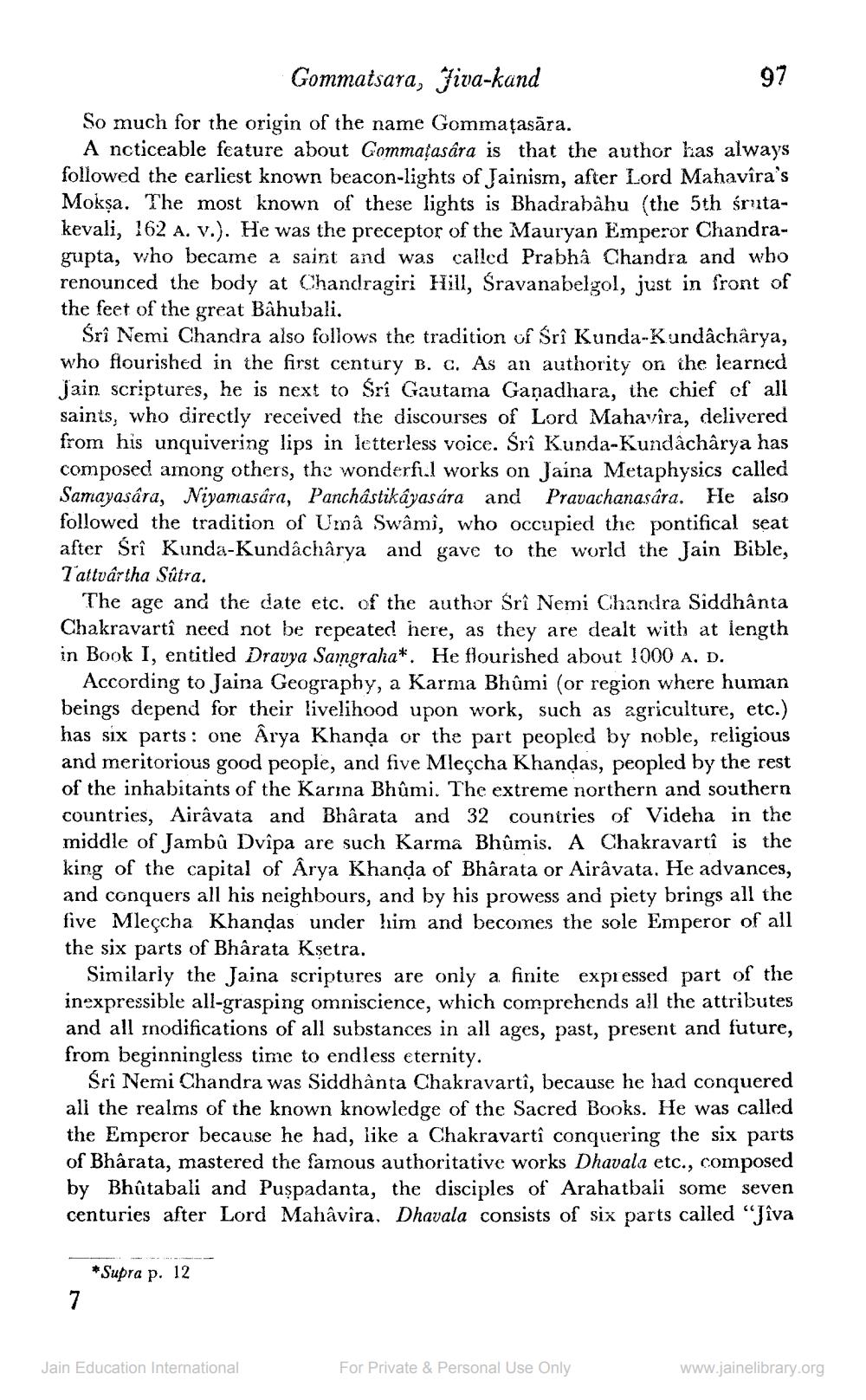________________
Gommaisara, Jiva-kand So much for the origin of the name Gommațasāra.
A ncticeable feature about Gommatasara is that the author has always followed the earliest known beacon-lights of Jainism, after Lord Mahavíra's Mokșa. The most known of these lights is Bhadrabâhu (the 5th śrutakevali, 162 A. v.). He was the preceptor of the Mauryan Emperor Chandragupta, who became a saint and was called Prabha Chandra and who renounced the body at Chandragiri Hill, Sravanabelgol, just in front of the feet of the great Bahubali.
Śrî Nemi Chandra also follows the tradition of Srî Kunda-Kundâchârya, who flourished in the first century B. C. As an authority on the learned Jain scriptures, he is next to Sri Gautama Gañadhara, the chief of all saints, who directly received the discourses of Lord Mahavira, delivered from his unquivering lips in letterless voice. Śrî Kunda-Kundáchârya has composed among others, the wonderful works on Jaina Metaphysics called Samayasara, Niyamasara, Panchâstikayasára and Pravachanasára. He also followed the tradition of Uma Swami, who occupied the pontifical seat after Śrî Kunda-Kundâchârya and gave to the world the Jain Bible, Tattvartha Sútra.
The age and the date etc. of the author Sri Nemi Chandra Siddhanta Chakravartî need not be repeated here, as they are dealt with at length in Book I, entitled Dravya Samgraha*. He flourished about 1000 A. D.
According to Jaina Geography, a Karma Bhûmi (or region where human beings depend for their livelihood upon work, such as agriculture, etc.) has six parts: one Arya Khanda or the part peopled by noble, religious and meritorious good people, and five Mleçcha Khandas, peopled by the rest of the inhabitants of the Karina Bhúmi. The extreme northern and southern countries, Airâvata and Bhârata and 32 countries of Videha in the middle of Jambû Dvîpa are such Karma Bhûmis. A Chakravartî is the king of the capital of Arya Khanda of Bhârata or Airâvata. He advances, and conquers all his neighbours, and by his prowess and piety brings all the five Mleçcha Khandas under him and becomes the sole Emperor of all the six parts of Bhârata Ksetra.
Similarly the Jaina scriptures are only a finite expressed part of the inexpressible all-grasping omniscience, which comprehends all the attributes and all modifications of all substances in all ages, past, present and future, from beginningless time to endless eternity.
Śrî Nemi Chandra was Siddhanta Chakravartî, because he had conquered all the realms of the known knowledge of the Sacred Books. He was called the Emperor because he had, like a Chakravartî conquering the six parts of Bharata, mastered the famous authoritative works Dhavala etc., composed by Bhútabali and Puspadanta, the disciples of Arahatbali some seven centuries after Lord Mahâvira, Dhavala consists of six parts called "Jîva
*Supra p. 12
Jain Education International
For Private & Personal Use Only
www.jainelibrary.org




